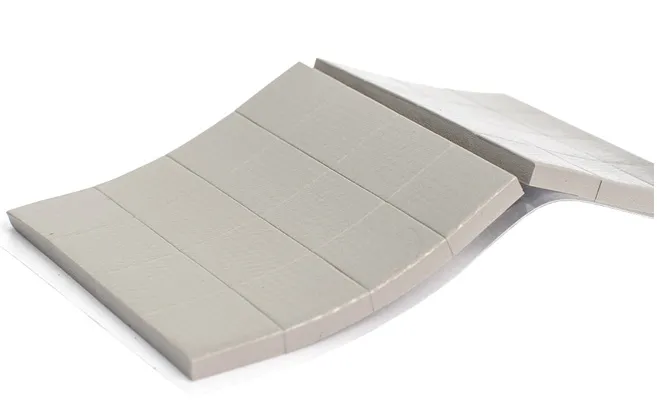Introduction to the Hardness of Thermal Pad
- Posted on:2021-12-02 09:59:00
- Source:AOK Thermal Pad Manufacturer FAQs
Thermal pads are widely used, such as filling cooling devices, communication hardware, automotive control units, LED lighting equipment, PDP display screen, etc. In these applications, the thermal pad produces compression to close the gap to achieve good thermal conductivity. The hardness of the thermal gasket directly reflects the hardness of the thermal pad, its size will affect the compression performance of the product, is a very important parameter. Many people in the choice of thermal pads will have doubts about the hardness, so xiaobian to introduce the hardness of thermal pads.

1. What is the concept of hardness?
Hardness is a variety of mechanical parts and tools must have mechanical performance indicators, used to characterize the degree of soft and hard material, refers to the material resistance to local deformation, especially plastic deformation, indentation or scratch ability.
2. what is the hardness of thermal pad?
There are different hardness standards as different testing methods are prescribed. The mechanical meanings of various hardness standards are different and cannot be directly converted to each other, but they can be compared through tests. The common hardness is classified by the test method: scratch hardness, pressing hardness, back hardness. According to the specific hardness name classification: Rockwell hardness, Brinell hardness, Richter hardness, Shore hardness and so on.
According to ASTM D2240 "Standard Test Method for Rubber Hardness with a Durometer", the hardness of thermal pads is expressed by Shore hardness. Shaw hardness measurement instrument for Shore hardness tester, mainly divided into three types: A, C and 00 type. The measuring principle is exactly the same, the difference is that the size of the needle, especially the tip diameter is different, 00 type is the largest, A type is the smallest. Shaw A type hardness tester is suitable for measuring the hard thermal pad; Shaw 00 durometer is suitable for measuring soft thermal pads.

Shore hardness belongs to the hardness of pressing, testing method is to use Shore hardness tester inserted into the material to be measured, dial pointer through the spring and a needle connected, needle into the surface of the measured object, the value displayed on the dial is the hardness value.
3. The hardness of thermal conduction pad is high or low?
The lower the hardness of the thermal pad, the softer the product, the higher the compression rate, suitable for use in low stress environment. On the contrary, the higher the hardness of the thermal pad, the harder the product, the lower the compression rate. Under the same application conditions, the product with low hardness, compared with the product with high hardness, has high compression rate, short thermal conductivity path, short heat transfer time and better thermal conductivity effect.
But it is not about low hardness, thermal conductivity pad has a certain hardness is not easy to deformation. Generally speaking, thermal conduction pads with higher hardness have better mechanical properties. In the application situation, it is necessary to choose the thermal conduction pad with proper hardness according to the actual situation.
AOK thermal conductivity pads can meet the requirements of 1.0 ~ 12.0W/m.K, excellent thermal resistance and insulation, can be cut according to customer requirements of specific shapes, to meet the needs of customers.
If you would like to learn more about AOK performance thermal materials, please visit our website at www.aok-technologies.com.

